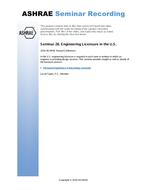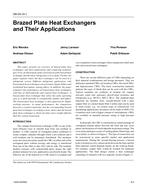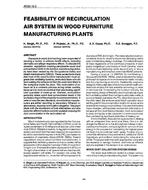Older load-bearing brick masonry buildings are common throughout North America and are considered good candidates for renovation and conversion. Insulation retrofits are typically implemented as part of this work. The addition of insulation can change the thermal and moisture balance in the wall assembly and, in some cases, initiate moisture problems such as freeze-thaw damage in masonry units.
Designers have used 2D heat flow and 1D dynamic hygrothermal models to predict the temperature and moisture conditions in these retrofitted wall assemblies. Unfortunately, there are few guidelines for assessing the susceptibility of clay brick to freezethaw problems. Two pass/fail tests have been used in the past to assess the freeze-thaw resistance of bricks: the cold water/boiling water absorption ratio (c/b ratio), and the 50-cycle freeze-thaw test. These approaches do not adequately represent the freezing mechanisms or conditions that bricks experience in the field.
An alternative approach is suggested here: frost dilatometry can be used to determine the critical degree of saturation at which freeze-thaw damage is likely to occur. Informed design decisions can be made by comparing moisture predicted loads during freezing from hygrothermal models to the freeze-thaw resistance of the clay brick defined by the critical degree of saturation.
This paper summarizes some of the limitations of the various approaches to assessing the freeze-thaw resistance of brick masonry units and presents a detailed methodology for using frost dilatometry to determine the critical degree of saturation of brick material. Test results are presented for bricks from several historical load-bearing masonry. Recommendations are made for applying this approach together with hygrothermal model in the design of retrofit insulation projects.
Citation: Thermal Performance, International Conference, 2010
Product Details
- Published:
- 2010
- Number of Pages:
- 8
- File Size:
- 1 file , 650 KB
- Product Code(s):
- D-BUILDINGSXI-203


